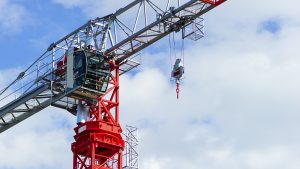Canada’s construction economy is winding down – except where it’s gearing up.
That was the takeaway from the BuildForce Canada economic forecast session held recently at the Mechanical Contractors Association of Canada’s (MCAC) conference in Nashville, Tenn. Ontario and British Columbia are driving the economy while other provinces hold steady and former dynamo Alberta finds a slower pace of growth.
“Alberta has come off a significant decline in new capital investment that had driven the previous expansion period for basically the last decade. We now believe we’ve hit a new normal and Alberta, as we see it now, will start to increase again. Certainly, the demand for new construction but also sustaining capital is on the upswing,” BuildForce Canada executive director Bill Ferreira said.
Ferreira noted new oil and gas and diversification projects are driving demand in the province, along with population growth.
“In Calgary, for instance, we’ve seen a fairly significant rise in the number of building starts going on in the downtown core, and you’ll see more and more of that. It’s a young province that continues to pull in a large number of immigrants, and we don’t see that changing anytime soon,” he added.
Economic growth in Ontario is also driven by immigration, particularly in the Greater Toronto Area, and a significant number of major infrastructure projects are taking shape in the province contributing to skilled labour shortages, Ferreira said.
“Add to that the fact that there’s a population that’s beginning to retire and you have very tight labour markets, as tight as one or two per cent last July in the construction industry. Construction is near to full employment but given that you need a little flexibility between projects, I would argue it’s beyond full employment,” he said.
B.C. is approaching a similar situation, Ferreira said, with a high number of major infrastructure projects starting up in the Lower Mainland as well as increased immigration to the province.
“That requires more residential construction, which means more commercial and institutional construction, and you have two very significant construction projects in the north that continue to pull labour not only from within the province but from neighbouring provinces,” he said.
BuildForce anticipates that by 2021, B.C. will need an additional 14,000 workers just on the non-residential side, Ferreira said, and “over and above all the extraordinary efforts of the provincial government and the industry to recruit new people, it takes several years to train people.”
“The reality is that we won’t be able to rely just solely on training within the province to meet that demand. There will have to be a fair amount of mobility both within the province but also bringing people in from neighbouring provinces, as well as, at times, using the Temporary Foreign Worker Program when availability has been tapped,” Ferreira said.
Labour shortages are a problem across the country and technology is not a catch-all solution, Ferreira noted.
“The big challenge is that how do you measure the impact of technology with our forecasts, and it’s very difficult to do until you start seeing that technology filter into the industry,” he said.
Ferreira said from talking to construction employers BuildForce has determined the first wave of technological change will take place in the back office which will improve design, estimating and controls.
“The next wave will be augmentation, tools and machinery to augment the skills of workers and free them from the more mundane aspects of their jobs and allow them to focus on the creative aspects,” he said.
That’s a “win-win” for the industry, he added, and will ease the burden on the labour force.
Incoming data shows the industry is responding to the coming wave of demographic change, Ferreira said, particularly in the mechanical trades.
“The mechanicals have done a better than average job in actually recruiting individuals into the industry in their four key trades. Across the country the story is slightly different but for the most part the mechanical trades have done a very good job in recruiting young apprentices into the industry,” he said.











Recent Comments
comments for this post are closed